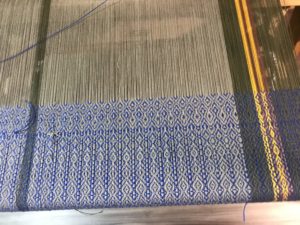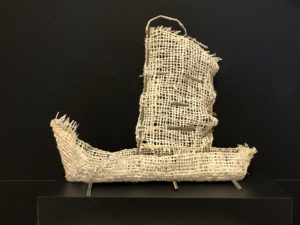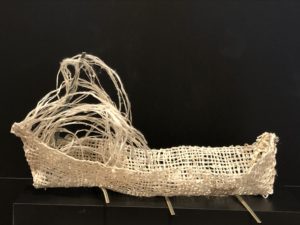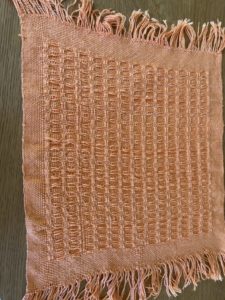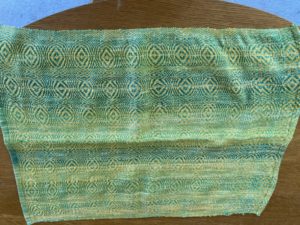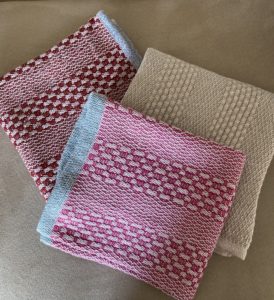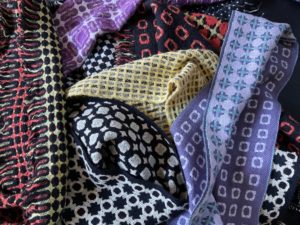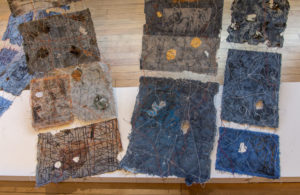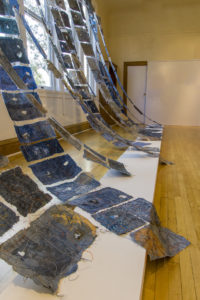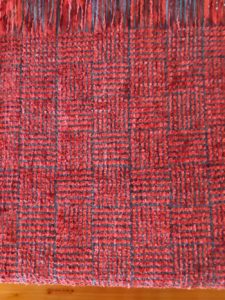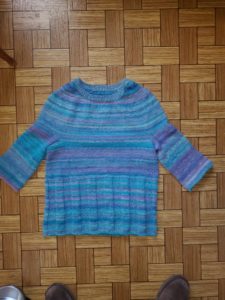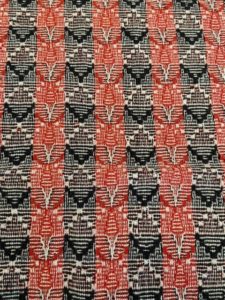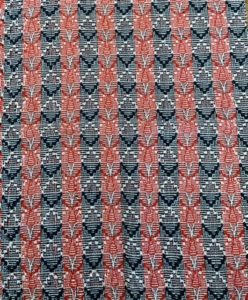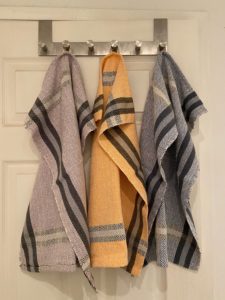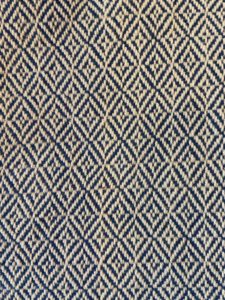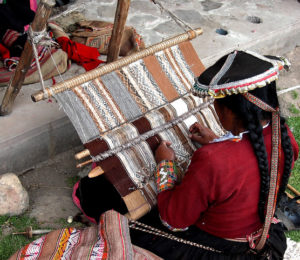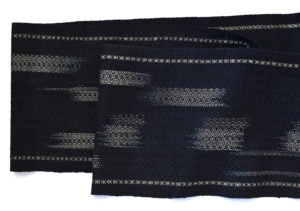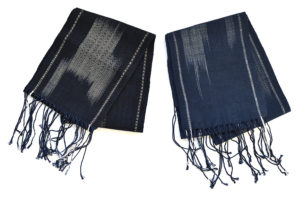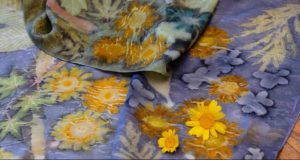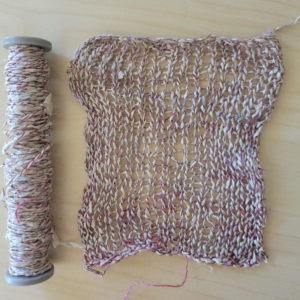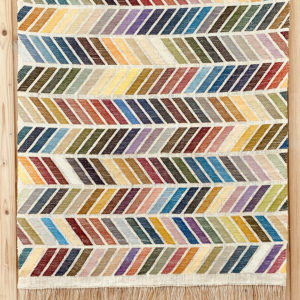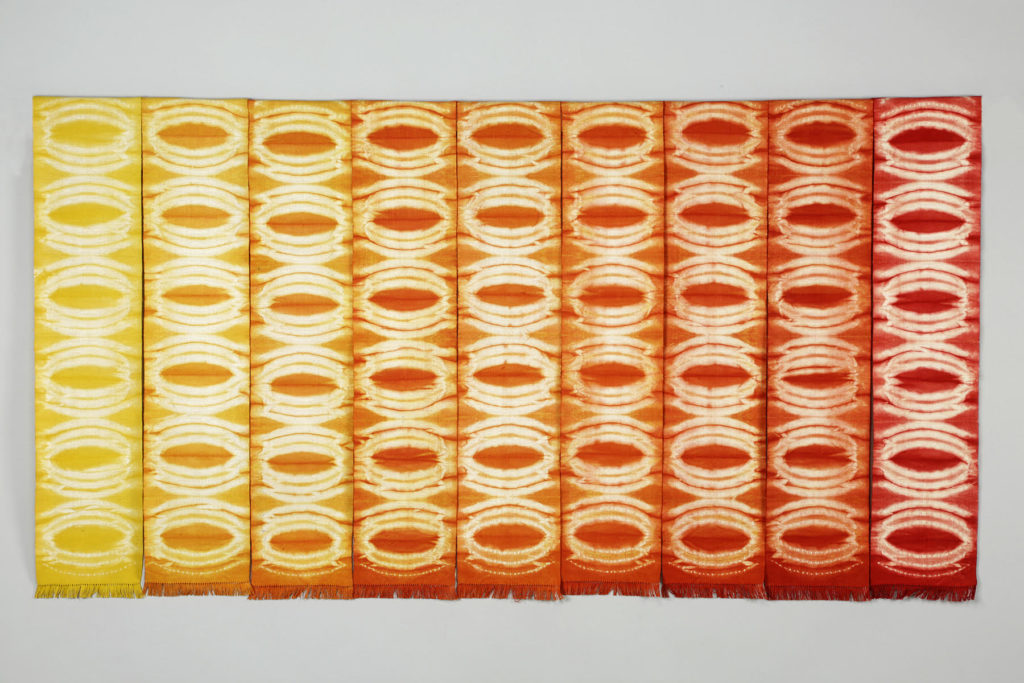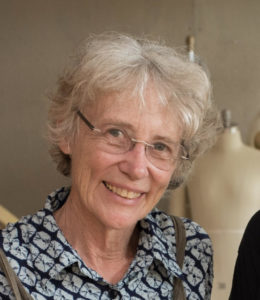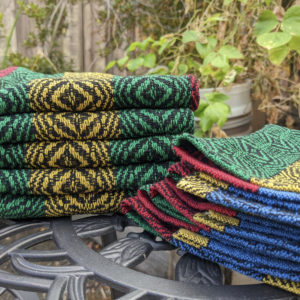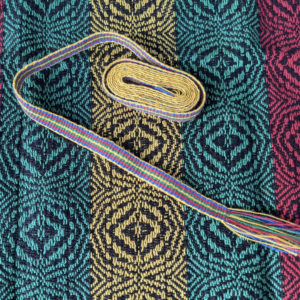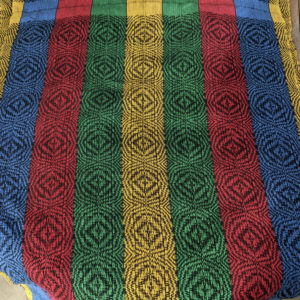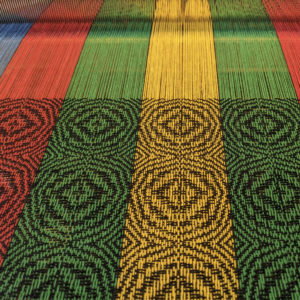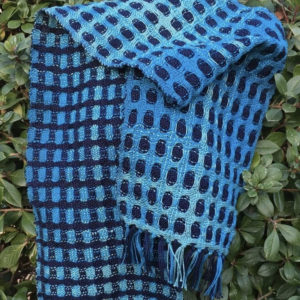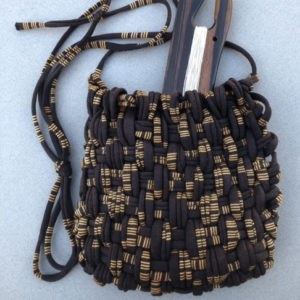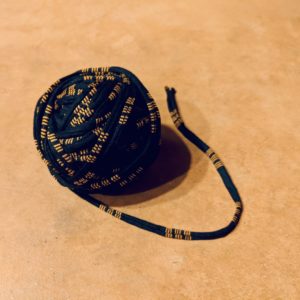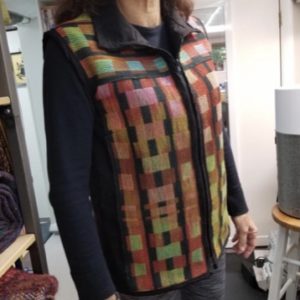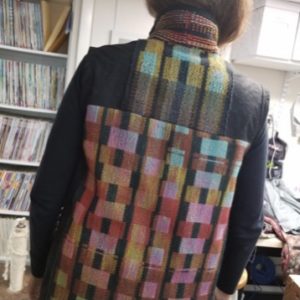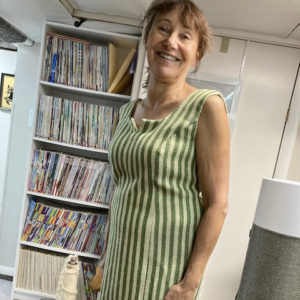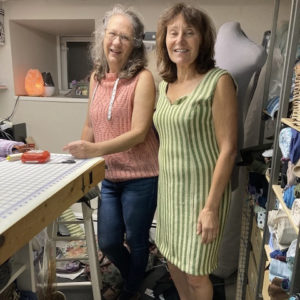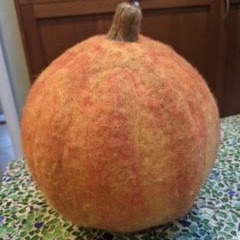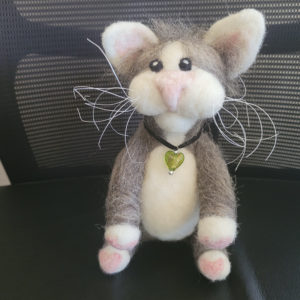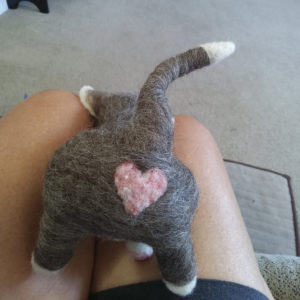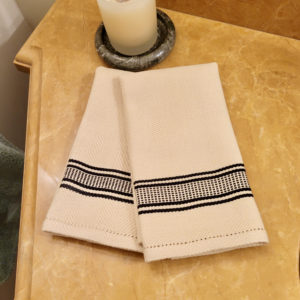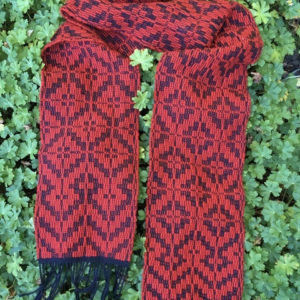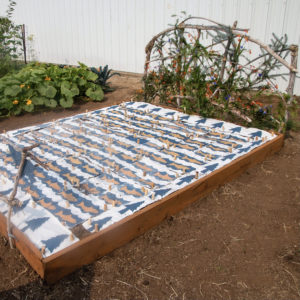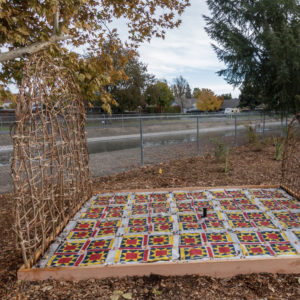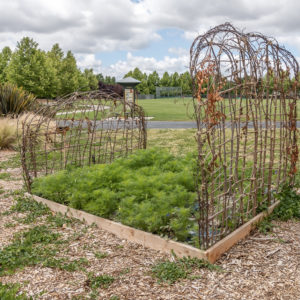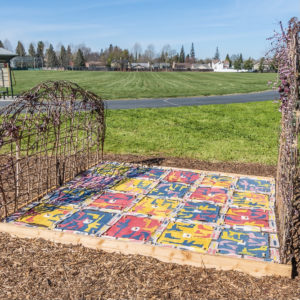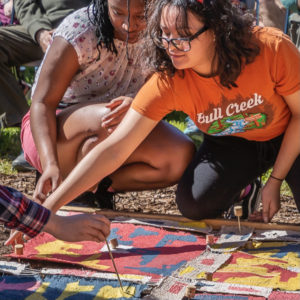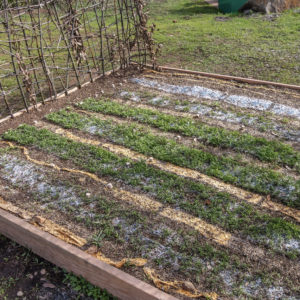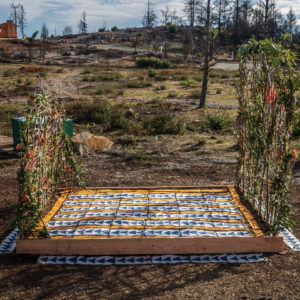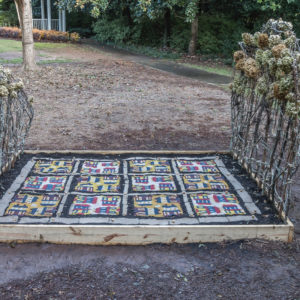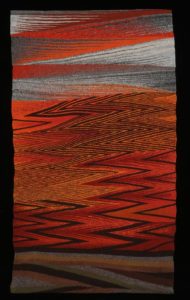Archana:
6th and final towel on the warp on the loom.
Barbara S:
Fantom Boats, inspired by our view of ships in the fog that we see on the SF Bay. I wove the
stiff silk kibisu yarn into a long panel in 2020, and later cut it up to create these sculptures. The fabric is almost stiff enough to stand on its own. Each boat has a speckled Japanese paper-covered cardboard deck. Each one is about 16”L X 14”H x 4 to 6”D. Lots of fun to make these.
Betsy:
Peach-colored, huck placemat made from a draft by Madelyn van der Hoogt. The green/yellow tea towel is made with 3/2 mercerized cotton using a draft from Handwoven. The yarn was dyed at Creative Endeavors.
Gail:
Gloria:
These are towels woven in a modified Huck Lace with a natural 8/2 cotton warp and woven in 8/2 cotton in colors. Towel with natural weft was woven with hemp.
Gudrun:
This is a collection of scarves woven in Deflected Double Weave. The pleasure of this structure is that the weaving has two very different sides, possibly different colors, or circles on side, squares on the other, horizontal stripes vs vertical stripes. Any kind of yarn can be combined, wool, silk, tencel, cotton. Check your stash.
Jane:
My latest art installation titled “In Deep Water” is featured now in a new publication Arte Morbida published in Italian and English. It is a magazine focused on contemporary textile arts, and it has many interesting articles for weavers and other textile artists and should be of interest to Black Sheep Handweavers Guild Members. The news about my exhibition in Sonoma through Feb. 23, is at this link, and from this people can also look at the whole website for Artemorbida. https://www.artemorbida.
John:
This is my first chenille project and my first try at a log cabin draft. I didn’t realize that the red yarn was twice as thick as the black yarn until after I had wound the warp. Dottie Calabrese helped me recover from this mistake and I made two decent scarves.
Sharolene:
Knitted sweater. This is a sweater that Brenda of Pans Garden dyed for me from 1 handspun strand of alpaca and one from a soft wool. I spun the yarn for it at about a dk to fingering weight yarn. The pattern is Sarah Swett’s Magic Medium Sweater. The color inspiration was from the color of a sky at sunset. I think she interpreted that very well. A big shout out to Brenda, a fantastic local master dyer.
Stefanie:
These are dish towels for my daughter, I wanted to make it an American theme.
